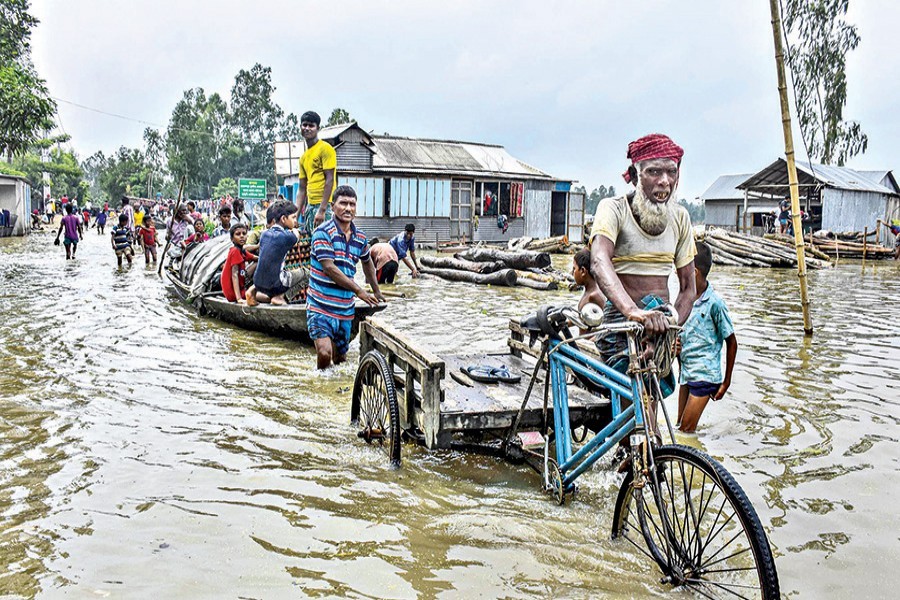Some 97.17 per cent of total income of the poorest people in the disaster-prone areas in Bangladesh is lost for damages - caused by the natural calamities, official data showed.
The loss is 10 times higher than that of the rich people in the same areas, the Bangladesh Bureau of Statistics (BBS) said while unveiling its Bangladesh Disaster-Related Statistics (BDRS) 2021 at a programme in Dhaka on Tuesday.
According to the BBS survey, the bottom quintile (lowest income group) in the country's disaster-prone areas lost 97.17 per cent of their total income, while the highest income group lost 9.3 per cent of their total income.
The BBS assessed the vulnerability in the BDRS 2021 by dividing the income of people into five quintiles in the disaster-prone areas.
The Bangladesh Environment Statistics 2020 was also unveiled at the function with Planning Minister M A Mannan in the chair.
Statistics and Informatics Division Secretary Dr Shahnaz Arefin presided over the programme, where State Minister for Planning Dr Shamsul Alam, Disaster Management and Relief Secretary Kamrul Hasan, and environment expert Dr Atiq Rahman also spoke.
BBS Joint Director Rafiqul Islam presented key findings of the BDRS 2021 on the occasion.
Various natural disasters in Bangladesh caused total financial loss worth Tk 1.79 trillion between 2015 and 2020, which was lower than that of the previous six years, the BBS data showed.
The BBS collected data from 127,000 households of 4,240 mouzas from all the 64 districts in the country.
According to the survey, people were workless for 21.03 days per year on an average from 2015 to 2020 due to impact of the calamities.
During the previous six years, between 2009 and 2014, people were workless for 12.13 working days for the same reason.
From 2015 to 2020, a total of 54 per cent households were affected by disasters at least once in a year, 31 per cent at least twice in a year, and 15 per cent thrice or more in a year.
During the period, some 46.49 per cent crop-fields were damaged by flood, 36.53 per cent by river and riverbank erosion, 10.61 per cent by water inundation, and the rest by four other disasters, as per the BBS data.
Besides, some 258,000 people became ill and 0.172 million people were injured due to disaster impact.
However, in the previous six years, between 2009 and 2014, some 189,000 people were ill or injured.
Some 240,000 people took treatment due to disaster impact from 2015 to 2020, and spent a total of Tk 39.42 billion for treatment purposes.
The per capita treatment cost was Tk 16,341 for disasters from 2015 to 2020, the BBS showed.
Hailing the BBS for releasing the environmental statistics for the first time, the planning minister said the data would help the policymakers and think-tanks for guiding the country's development path and strategy.
M A Mannan opined that the country developed a lot in different socio-economic indicators, but ensuring sanitation in the disaster-prone areas is still a challenge.
So, the authorities concerned should think about ways of developing sanitation coverage, especially in the haor areas, he added.


